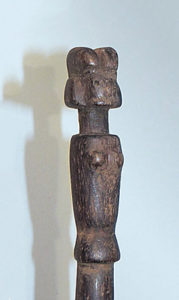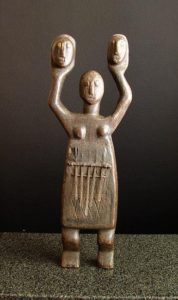Zaramo
The Zaramo are a Bantu tribe who live in the coastal plains and low hills surrounding Dar es Salaam, Tanzania’s capital. Many Zaramo also speak Swahili, the language of trade and communication for much of East Africa.
Before the eighteenth century, the Zaramo lived farther inland, and have only moved into the area around Dar es Salaam in the last 200 years.
During the late nineteenth century, the Zaramo became prominent traders, dealing in ivory, salt, fish, and rhinoceros hides. They were also highly involved in the slave trade and would hunt slaves from other tribes.
The Zaramo society is matrilineal, meaning the line of descent and family name is traced through the females.
The Zaramo produce various wood sculpture, best known of which are small doll-like figurines known as mwana hiti, meaning “child of wood.” It is used in initiation ceremonies of the Kwere, Zaramo, Luguru, and Gogo people of Tanzania. Zaramo mwana hiti figures carry both practical and symbolic significance. They serve as companions for young girls during the initiation ceremony, as they are separated from their families during the process as well as childless married girls and women.




